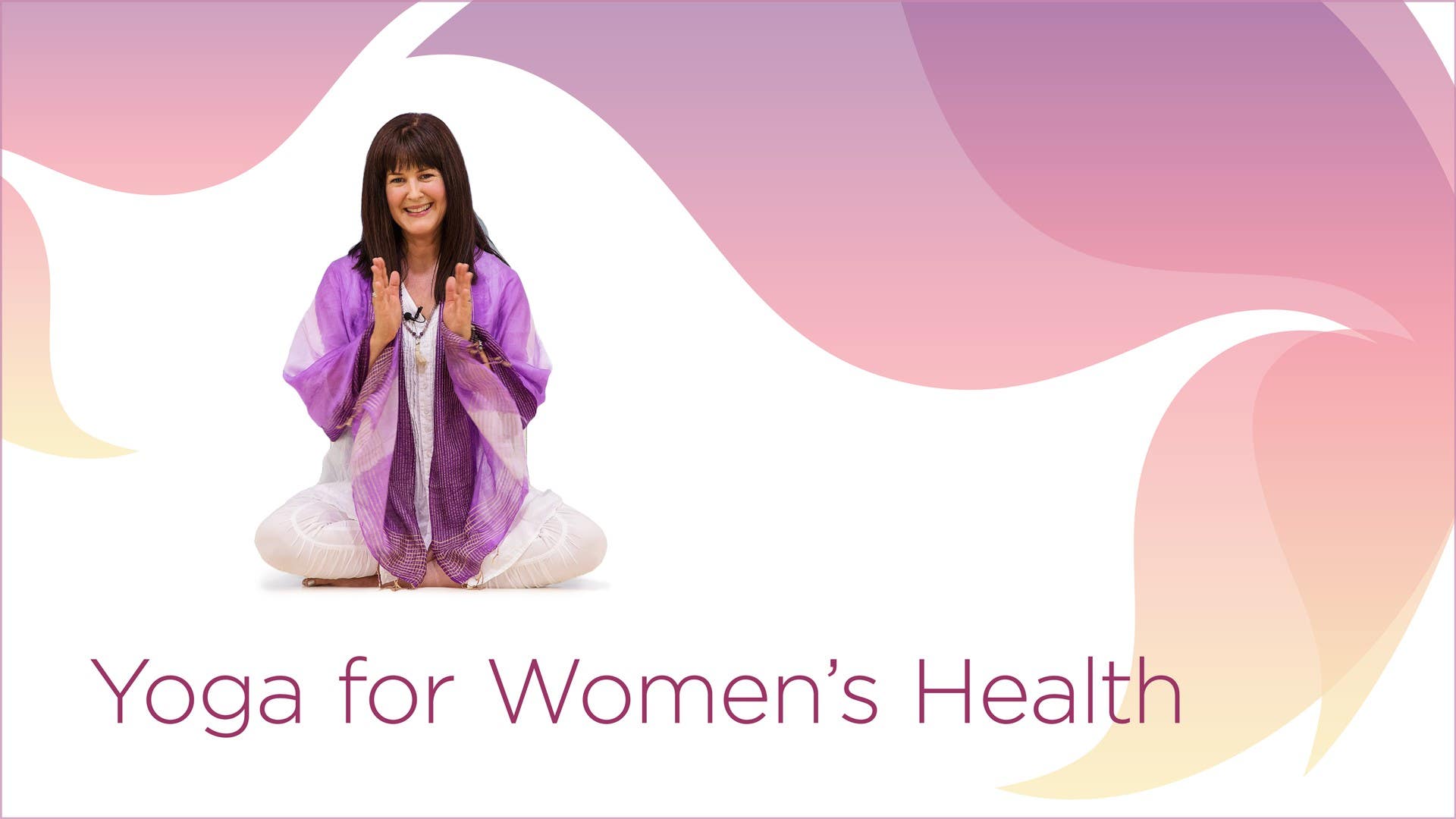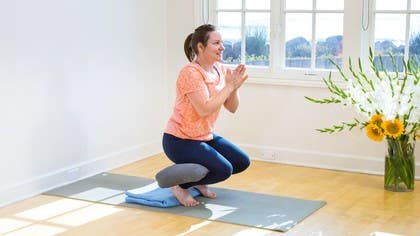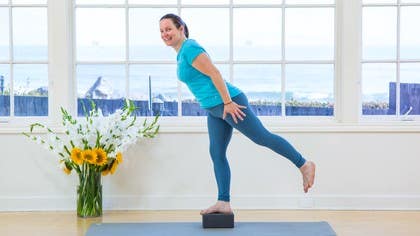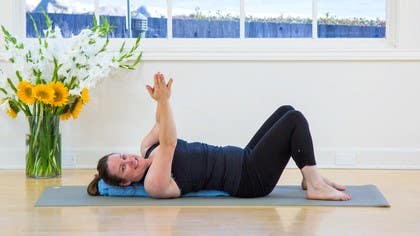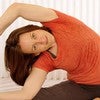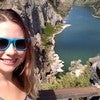Description
About This Video
Transcript
Read Full Transcript
The transversus abdominis muscles play a vital role in our pelvic health. They're part of the core floor. So we have the diaphragm, pelvic floor, transversus abdominis muscles wrap around like a corset, and then the multifidus muscles that run all the way from the cervical spine all the way down to the sacrum along the spine. So that's our inner core unit. And today we're going to activate and locate the transversus abdominis muscles, focus in on them, but just know that they work in synergy with everything else.
So we will walk the fingers in on the pelvis, finding the hip bones here, walk the fingers in a couple centimeters in and a couple centimeters down, or if you're in the U.S., an inch in and an inch down. And we'll turn to, I'm going to turn to the side so that you can see that it's a really small movement here. We're going to tip forward towards the balls of the feet and backwards. And we just noticed, do we feel the transversus abdominis muscles firing as we lean forward towards the balls of the feet and then back towards the heels? And then also noticing, is it a little stronger as we lean forward or back?
Another great pose to activate the transversus abdominis muscles as well as the multifidus along the spine is called metronome. So we bring one heel forward and tip back away from that leg. So the upper body's moving in the opposite direction as the leg that's moving in this sort of metronome for anyone who plays music. And the arms can go wherever they would like to. It might feel nice to have a wall to steady yourself, maybe a windowsill or a chair or something to hold onto, but it's okay that we're, if we're feeling wobbly in this, you know, we're asking the leg and the foot muscles to work.
So see what it's like to put a micro bend in that knee. It might want to lock, that knee might want to lock and see if we can not allow it to. Great. When this leg, the standing leg feels like it's done lots of work there, then we're going to bring both feet down towards the floor and we'll switch to the other side. So again, standing leg has that little micro bend in the knee and we bring the heel to the floor and then the toes.
And that might be your metronome or it might be a dancing metronome. So the upper body moves in the opposite direction as the bottom leg and the arms can be part of it. The arms can be at the sides, remembering to breathe. So we're activating transversus abdominis muscles and the multifidus muscles the most. When we breathe, then we add in the two other parts of that core floor.
That's the diaphragm and the pelvic floor. So it's a pretty amazing pose when we continue to breathe. Then we'll see what it's like bringing both feet down towards the floor. If you have a block or a book or something at home, let's try it on a block, whatever leg you started with first. I like to play so that my toes are over the block and my foot is feeling like most of my foot is on the block.
And it can be nice just to swing the hip here, but then metronome is moving the body in the opposite direction of that leg. And if you feel like I don't like the block or I'm holding my breath now, then we leave the block out of it. Amazing. You will likely feel that inner unit, that inner core really working here. And we'll switch to the other side.
For those of you with foam blocks at home, it might add a little more challenge because they move a little bit more so we can let the hip just hang there for a moment. And then upper body moves in the opposite direction of the leg and the arms possibly come in as well. Breath is continuous. See if you can smile a little bit and enjoy it, imagine that you're a superhero as you fly forward. Remembering to keep a little micro bend in that standing leg still.
Great. And then we'll release, come off the block. So the next pose that we're going to move into, let's call it ski jump. So imagine one of those Olympic skiers and their skis are pointing up, the hands come back, we're on the balls of the feet, the knees have a micro bend in them, lots of length in the spine, the heels stay down so the heels aren't lifting. Can we make a little more space between the shoulder blades here?
And find your breath. So this in itself is a really activating pose for the whole core. We stay here with continuous breath. Imagine that you're like going to land this ski jump, amazing. Right now you're just enjoying flying through the air with it.
One more breath here. Good. And then slowly coming out and we'll move down to table. Another way to activate the transversus abdominis muscles is right from table, just from simply tucking the toes under. So it's really subtle and it's hard to, if you were to feel for transversus abdominis muscles here and tuck the toes, you can try to do that and see if you can feel it.
Sometimes it's easier to notice it on a friend because we're really holding them so we just have one arm. But just that movement alone activates the transversus abdominis muscles. So continuous breath here still. Great. And then your choice, if you'd like to release the tops of the feet to the floor or keep the toes tucked, completely up to you, we're going to start to lift, lifting one leg up, very, very, very slowly.
So see how slowly we can move with that, extending that leg back, pushing through the heel. Find length, continuous breath here. See if you can come back to center with the hands. So I feel like I'm tipping over to one side. See if you can come back to center there.
And if it feels available, we can lift the opposite hand, but we don't have to. We could even hover the hand, see if it feels like it's available, maybe looking forward. Amazing work. And then lowering that hand down, lower the knee down. Good.
And then we'll do the other side. So come back to your table, really feel that foundation, hands are planted, hands are under the shoulders, knees are under the hips. Find your breath here. And then very slowly start to lift the opposite leg up. Pushing through the heel can help.
Think about coming back to the center, which feels harder for me on this side. I wonder how it is for you. And then reaching the arm if we want to, if that feels like it's available. Finding your breath here and a smile. And then slowly lowering that hand down, lower the knee down.
Move into a version of side plank here, right hand stays planted, left toes just come up a little bit and plant that left foot down, right knee might move back. Your choice if we leave that knee on the ground or roll to the outside edge of the right foot, lifting left arm up, finding breath here, and then coming back down. And we'll get ready to switch to the other side. So come to that table again, catch your breath here. Right toes come up a little bit, plant that right foot onto the floor.
If you want to open up with the knee down, that's there for you. Or roll onto the outside edge of the left foot. Open the spine, continuous breath, come back to table when you're ready. We'll come onto our back then for a little bit more with the transversus abdominis muscles. So coming all the way down to the back, find neutral pelvis here.
Remember pelvis, we know when we're there if we place our hands onto the pelvis so that fingers are pointing towards the pubic bone. And we can sort of tip a little bit one direction then the other. Find where we feel that low back curve. And then from here, find those hip bones, those ASIS bones, walk a little bit in, a little bit down. Take an inhale here, and on the exhale we'll make an S sound, inhale through the nose, and exhale.
Now notice with the feet planted here we can make one minor, minor change to this pose and engage the transversus abdominis muscles a bit more. So we walk the heels out, and we lift the toes up. So that's what we were doing in our table pose. This right there engages them all on its own without the breath. And so then with the breath you might notice even more engagement.
Another great cue to think of for your next exhale is if the hip bones, these ASIS, the front of the hip was the outside of a book and we were closing the book. So on the exhale, we have the S breath and closing the book. We take our inhale here, and the exhale, amazing. Bend the knees, plant the feet, we'll start to windshield the knees a little bit, just allowing the muscles to release. We have this balance of strengthen and activate the muscles and then releasing them.
Lengthen the legs out away from you, maybe wiggle the feet a little bit so that you can sink into the earth here, softening or closing the eyes. Releasing what is your comfortable relaxation. Noticing the breath and allowing the breath to soften. Is there any other place in the body that you're holding tension, can you release the face, the jaw, the muscles around the hips. All right.
You can stay here as long as you would like, otherwise starting to make small movements, bringing yourself back, wiggling fingers and toes, maybe taking a yawn, stretching arms up overhead, stretching out through the legs, lengthen the whole body, bending the knees, planting the feet, rolling over to one side, pausing there for a moment, and using hands to bring you up to sitting. Thank you for playing around for finding transversus abdominis muscles. Have a fantastic day.
Yoga for Women's Health: Yoga For Pelvic Health
Comments
You need to be a subscriber to post a comment.
Please Log In or Create an Account to start your free trial.
